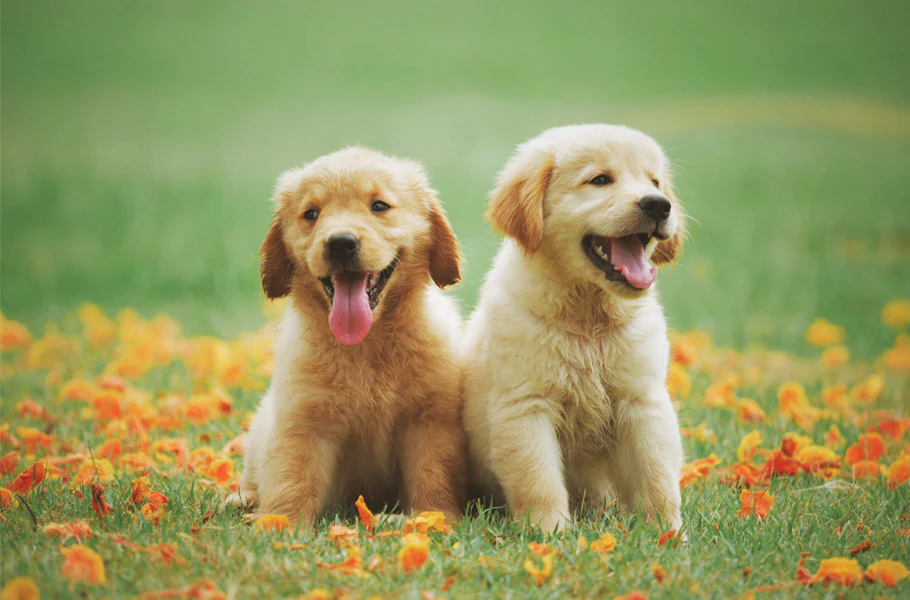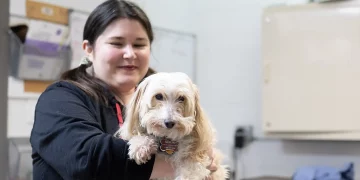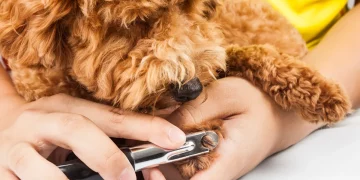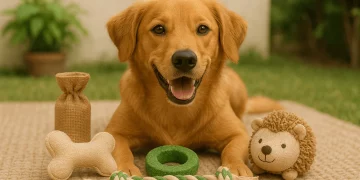Pets, whether dogs, cats, or other domesticated animals, often exhibit complex and nuanced social behaviors when interacting with one another. Understanding these behaviors can enhance the way we care for our pets, allowing us to create a harmonious environment where animals can thrive together. From playful exchanges to subtle gestures of dominance and submission, pets communicate with each other in a way that is essential for their well-being. In this article, we will explore how pets communicate, focusing on different species and their social dynamics, to help pet owners understand and manage multi-pet households.
1. How Dogs Communicate with Each Other
Dogs are highly social animals that rely on a variety of signals to communicate with each other. These signals can be both verbal and non-verbal, and understanding them is key to interpreting their interactions.
1.1. Body Language: The Foundation of Canine Communication
A dog’s body language is one of the most important ways it communicates with other dogs. Key body postures and movements provide insight into a dog’s mood and intentions.
- Tail Wagging: The position and speed of a dog’s tail wagging can reveal a lot about how they feel. A relaxed, wagging tail usually indicates a friendly and approachable demeanor. However, rapid or stiff tail wagging can indicate excitement, nervousness, or even aggression.
- Ears: The position of a dog’s ears also plays a major role in communication. Erect ears suggest alertness or curiosity, while flattened ears signal submission or fear.
- Posture: The way a dog holds its body communicates its social stance. A dog that stands tall with its chest out may be expressing dominance, while a crouched or lowered body may indicate submission or a desire to avoid conflict.
1.2. Vocalizations in Dog-to-Dog Communication
Dogs also use vocalizations to communicate with each other, though they typically rely more on body language. Common vocalizations include:
- Barking: Dogs use barking to communicate with each other in various ways, from alerting their pack to a potential threat to initiating play.
- Growling: Growling is often a sign of discomfort, fear, or aggression, especially when combined with a rigid stance or a defensive posture. However, dogs can also growl playfully during interaction, signaling friendly competition.
- Whining and Howling: These vocalizations can indicate distress, loneliness, or frustration. While dogs may whine to get attention, howling is often associated with emotional responses like anxiety or excitement, especially when hearing other dogs howl.
1.3. Play and Socialization Between Dogs
Play is an essential part of canine communication. When dogs play together, they engage in behaviors that are vital for their social development, teaching them important lessons about boundaries and respect. Key aspects of dog play include:
- Play Bows: A play bow (front legs lowered with the rear raised) is a universal sign among dogs that signals a friendly invitation to play. It serves as a way of signaling that the dog’s intentions are not aggressive.
- Chasing and Mock Fighting: Dogs often engage in mock fights or chase each other as a form of play. This type of behavior helps dogs learn bite inhibition and control, making them more socially adaptable.
- Submissive Gestures: Dogs may display submissive gestures, such as rolling onto their back or exposing their belly. These behaviors are intended to show that they are not a threat and are willing to engage peacefully.
2. How Cats Communicate with Each Other
While dogs are more social pack animals, cats are often seen as more solitary creatures. However, cats still exhibit a range of behaviors when interacting with other cats, especially in multi-cat households.
2.1. Body Language in Cats
Cats rely heavily on body language for communication. Understanding these signals can help pet owners gauge the relationship between cats and their comfort levels.
- Tail Movements: The tail is one of the most expressive parts of a cat’s body. A puffed-up tail indicates fear or aggression, while a relaxed tail suggests calmness. A cat may also wave its tail in a slow motion to show irritation or excitement.
- Ears and Whiskers: Ears that are held flat against the head signal annoyance, aggression, or fear, while forward-facing ears indicate interest or curiosity. Whiskers that are forward-facing typically show that the cat is engaged and attentive.
- Posture: Cats may stand tall and arch their backs to appear larger when feeling threatened or dominant. Conversely, a cat that hunches low with its tail tucked under might be signaling submission or fear.
2.2. Vocalizations in Cat-to-Cat Communication
Cats use a variety of vocalizations to communicate, particularly during interactions with other cats.
- Meowing: While meowing is more commonly used by cats to communicate with humans, cats may also meow at other cats in certain situations, such as to call attention or request social interaction.
- Hissing: Hissing is a clear sign of fear or aggression and serves as a warning to other cats. It is often accompanied by a defensive posture, such as an arched back or fluffed-up fur.
- Purring: Purring is generally associated with contentment, but it can also be a sign of distress or discomfort. When cats purr during a confrontation, it may indicate that they are trying to de-escalate the situation.
2.3. Socialization and Territory Marking
Cats are territorial animals, and interactions with other cats are often based on establishing or defending territory. Key behaviors related to territory and social interaction include:
- Head-Butting and Rubbing: Cats often head-butt or rub against one another to exchange scents and strengthen bonds. This behavior is a sign of affection and mutual trust.
- Fighting: When two cats encounter each other in a territorial dispute, they may engage in hissing, swatting, and even biting. These aggressive interactions help cats establish dominance or resolve conflicts.
- Scratching: Cats use scratching posts to mark their territory. They may also scratch objects in their environment to assert dominance or communicate with other cats nearby.

3. How Other Pets Communicate with Each Other
Pets such as rabbits, guinea pigs, and birds also have social behaviors when interacting with other animals. While the communication methods vary by species, the key to understanding these pets lies in observing body language, vocalizations, and scent-marking behaviors.
3.1. Rabbits
Rabbits are social animals that communicate through body language, scent marking, and vocalizations like thumping their hind legs. Thumping is a warning sign, usually triggered by something that scares the rabbit. They also use their noses to nudge each other, signaling affection or establishing social bonds.
3.2. Guinea Pigs
Guinea pigs communicate through vocalizations, such as wheeking (a high-pitched squeal), and body language, including popcorning (jumping in excitement). They also use scent marking to establish territory and show dominance.
3.3. Birds
Birds communicate with each other primarily through vocalizations, such as chirping, squawking, and whistling. Body language, including wing flapping, head bobbing, and beak clacking, also plays a role in expressing emotions and intentions.
4. Conclusion: Interpreting Pet Behavior for Better Relationships
Pets communicate with each other in a variety of ways, and understanding these signals is key to fostering healthy and positive interactions among animals in a multi-pet household. Whether it’s dogs engaging in playful behavior, cats establishing territory, or smaller pets using vocalizations and body language, recognizing their social cues allows pet owners to create a peaceful and harmonious environment for all animals involved. By being mindful of their social needs, pet owners can ensure their furry companions lead fulfilling lives with positive relationships among each other.























































